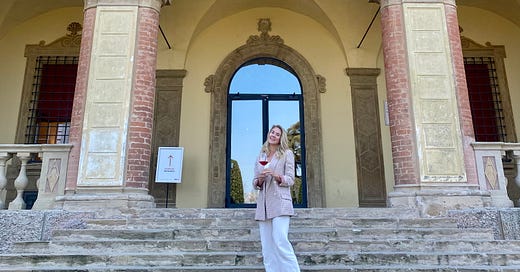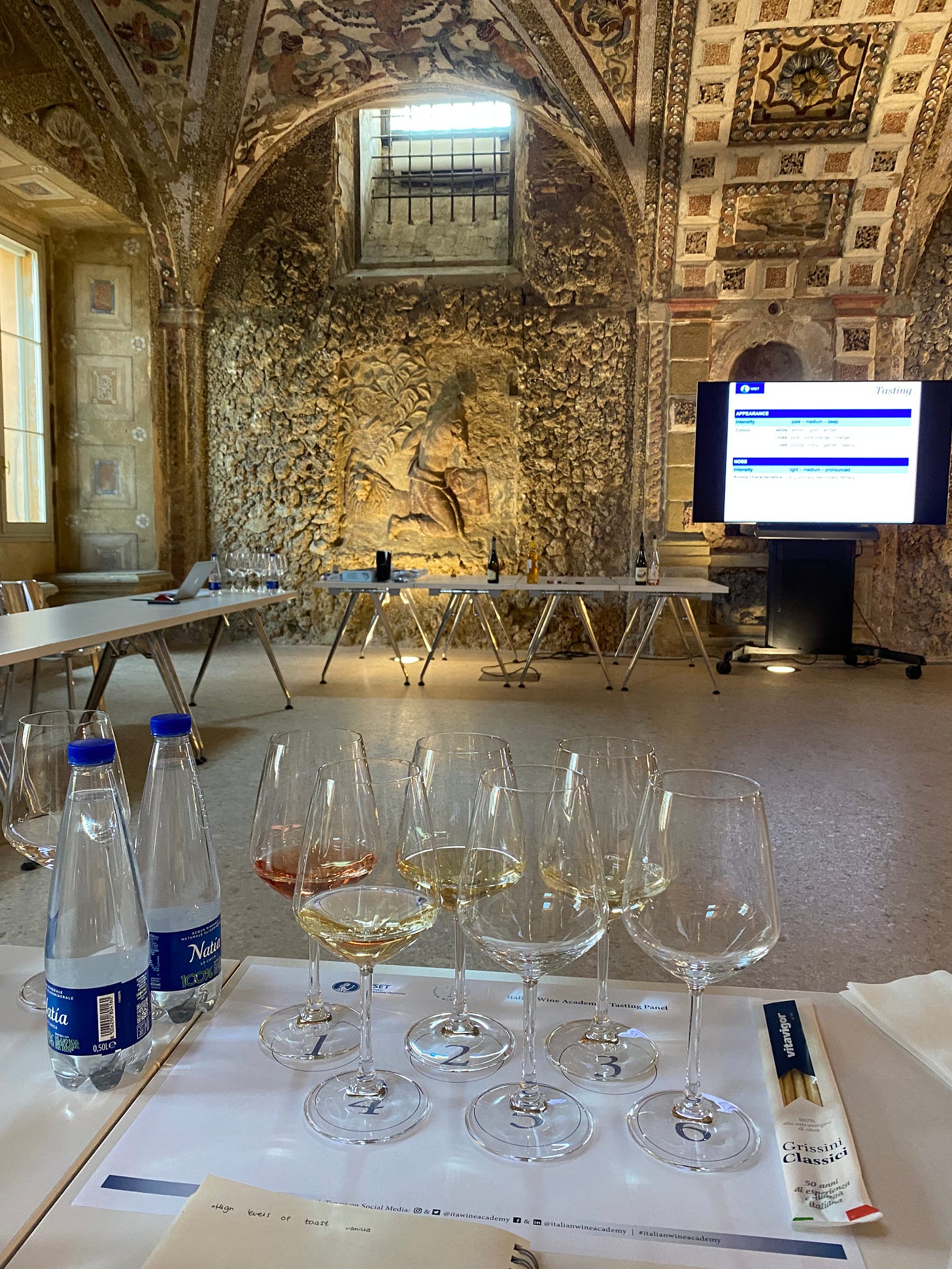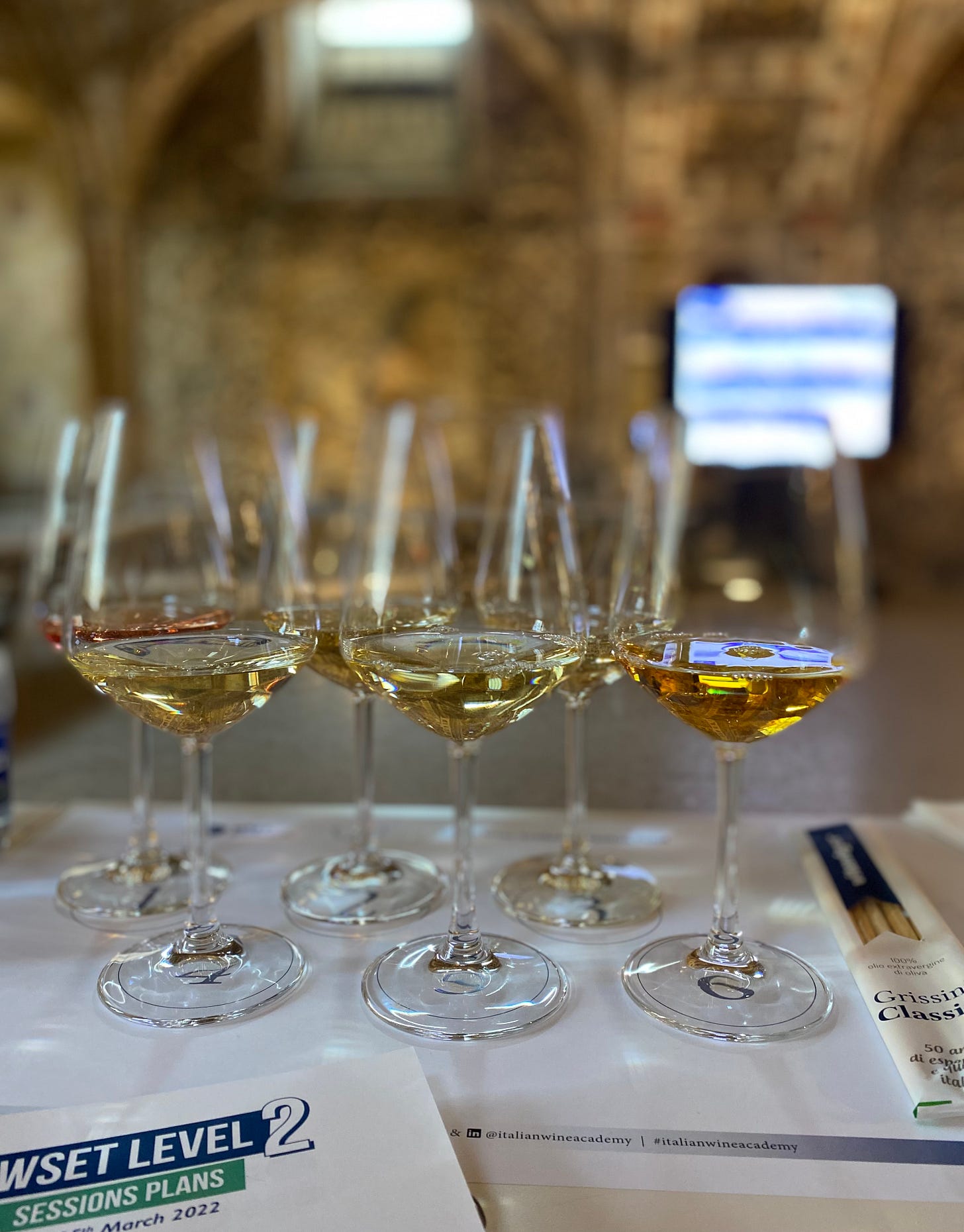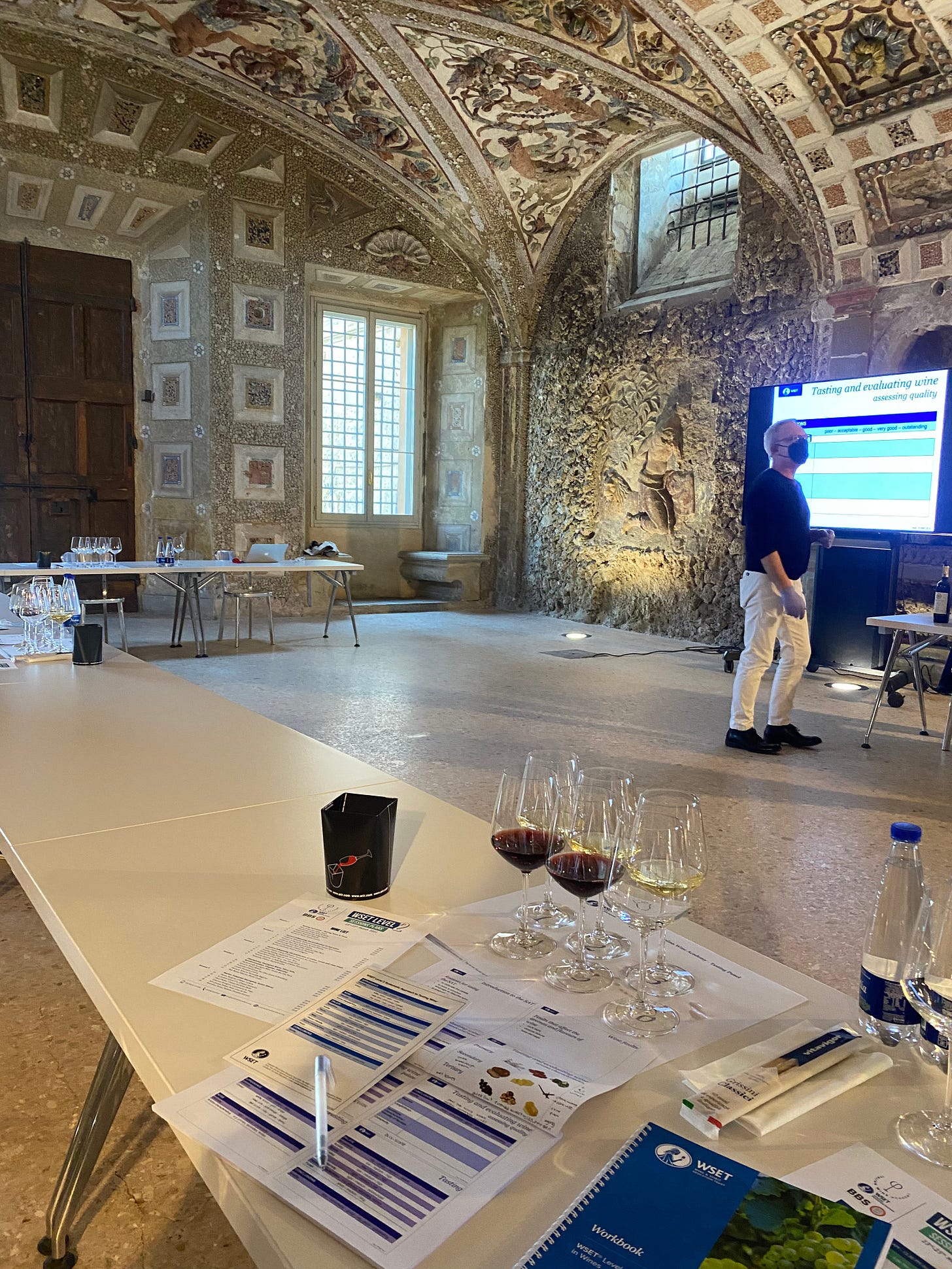Dear Reader,
I hope you’re feeling well and rested. Spring has sprung in Bologna, the weather is warmer and cherry blossoms all around the city. I finished my second semester of studies this week and it feels liberating.
My final course of the semester was a three day course organized by the Wine and Spirit Education Trust (WSET) and the Italian Wine Academy. It was a very intense course and extremely interesting so I wanted to share with you my experience of the Level 2 course. Out of the 50 wines we tasted, I’ll share the outstanding ones for you to look into and hopefully enjoy.
Tomorrow morning I’ll be leaving to Paris, so you can expect a Merenda of covering Paris tips and foods in April.
Now let’s get into it!
Cari Saluti,
Emilia in Bologna
1. Level 2
WSET is a London based global organisation, founded in 1969, which arranges courses and exams in the field of wine and spirits. WSET is regarded as one of the world's leading providers of wine education.
The WSET course consists of four levels, which leads to an award once completing one level. My Food and Wine MBA program at Bologna Business School provides the Level 2 Award, which is the beginner- to intermediate-level qualification of exploring wines suitable for industry professionals and wine enthusiasts.
The Level 2 course curriculum covers principal grape varieties, environmental factors, grape-growing, winemaking, labelling terms used to indicate origin, style and quality, principles and processes involved in the storage and service of wine and principles of food and wine pairing.
The principal grapes the course covered were:
Chardonnay
Pinot Grigio/Gris
Sauvignon Blanc
Riesling
Cabernet Sauvignon
Merlot
Pinot Noir
Syrah/Shiraz
in addition to regional varieties such as Nebbiolo, Barbera, Sangiovese, Corvina, Cortese, Fiano, Verdicchio, Garganega, Primitivo of Italy, Carmenére, Malbec, Pinotage, Grenache, Tempranillo, Gamay, Gewurztaminer, Viognier, Albarino, Chenin blanc and Sémillon. In three intense days, we learned about each grape, were they grow and how different climates affect the grape varieties. We also covered the topic of terroir and the influence of rivers, air, mountains, clouds, fog, slopes and soil. After three days we faced the exam, which consists of 50 multiple choice questions in 60 minutes.
I’ve listed a few examples of the easier questions, to help you understand the exam’s level of complexity (correct answers below):
1. Sweet with high acidity, low alcohol and dried-apricot and honey characteristics best describes
a) Pouilly-Fumé
b) Pouilly-Fuissé
c) Trockenbeerenauslese
d) Sauternes
2. What is the correct sequence of events for most red winemaking?
a) crushing, pressing, alcoholic fermentation
b) crushing, alcoholic fermentation, pressing
c) pressing, alcoholic fermentation, crushing
d) pressing, crushing, alcoholic fermentation
3. A young Pouilly-Fumé has a palate of
a) dry with low acidity
b) medium sweetness with high acidity
c) dry with high acidity
d) dry with medium acidity
4. Australia has a reputation for very good and outstanding-quality Riesling wines produced in
a) Hawke’s Bay
b) Clare Valley
c) Central Valley
d) Walker Bay
5. The flavours of autolysis are
a) lemon and pineapple
b) apple and cream
c) biscuit and bread
d) butter and cream
Correct answers (1c, 2a, 3c, 4b, 5c)
2. The Tasting
After each theory part a thorough tasting session followed. In total we tasted 50 wines in three days. The tasting was arranged to 8 sessions, of 5-7 wines a session and finally a practice tasting of two blind wines. We learned the correct tasting technique, describing aroma and flavour and making a conclusion of the quality (acceptable-good-very good-outstanding).
On the first day we tasted 11 wines, ranging from a Barolo to a Californian Pinot Noir. The second day was the toughest as we had three tasting sessions, covering 18 wines altogether along the theoretical part. We started with whites varying from Austrian and German Rieslings, to a South African Chenin Blanc, a Sancerre and a Mersault. This was followed by tasting varieties of Cabernet Sauvignon, Merlot, Shiraz, a Haut-Médoc and a St. Emilion Grand Cru. On the final day we tasted Tempranillo, Carménere, Malbec and Pinotage and Italian wines such as Soave Classico, Fiano di Avellino, Montepulciano d’Abruzzo and Passito di Pantelleria. Our tasting ended with sparkling and fortified wines, where we would compare Cava and Champagne and their traditional method to Prosecco and Asti made with different styles of tank fermentation. Within the fortified wines, we tasted Tawny Port and Fino Sherry.
Of all the 50 wines there were a few outstanding ones and my personal favorites which I share with you below.
3. The Outstanding Wines
Keep reading with a 7-day free trial
Subscribe to Merenda to keep reading this post and get 7 days of free access to the full post archives.








